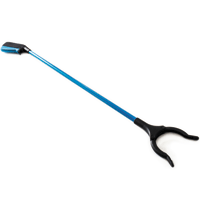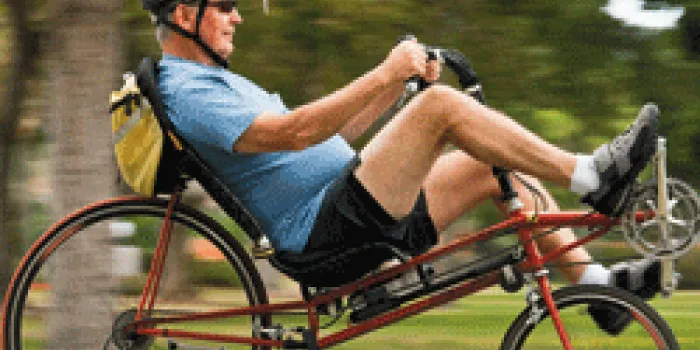Although arthritis may worsen with aging, you can keep your joints in motion even as you age. The secret is staying active, maintaining a healthy weight and nutritious diet, and taking care of symptoms. “One of your biggest goals is preventing arthritis from getting worse,” says Laura Herman, MPT, a physical therapist at St. Louis University Hemophilia Treatment Center. Sitting in a recliner may be restful, but moving is more beneficial. With arthritis, you have to go slower on the painful days and not overdo it when you’re feeling fit, she says. “Pacing your activities is important.”
Joint degeneration
With aging, joints may deteriorate further. Their cushioning agent, the cartilage between them, may become damaged or thinner. Cartilage breaks down from wear and tear. If enough of it is lost, bones rub, causing stiffness, pain and loss of range of motion. “That can lead to a decrease in functional mobility,” Herman says.
This process of deterioration is accelerated in people with hemophilia who have frequent joint bleeds. With each bleed into a joint, components of the blood damage the synovial membrane, which secretes synovial fluid, a thick, sticky lubricant that decreases friction between joints. Blood in the joint irritates the synovium, which tries to heal itself by becoming thicker, with a blood supply of capillaries that easily bleed. The synovial overgrowth can also lead to cartilage damage and bony cysts. “There also can be bony changes, such as bone spurs,” says Herman. “The viscosity of the joint fluid can also be affected.”
It may be difficult to tell the difference between a joint bleed and symptoms of arthritis. Both cause pain, stiffness and reduced mobility. Joint bleeds may also swell and feel warm to the touch.
Physical therapy’s role
If you’re unclear whether bleed-related pain or arthritis is slowing you down, meet with a physical therapist at your hemophilia treatment center (HTC). “After doing an evaluation, we want to focus primarily on functional goals for the patient,” says Herman. “We want to improve their range of motion, their flexibility.”
Regaining strength is also important. Although weight training is popular, Herman starts patients without weights to ensure their pain doesn’t escalate. “After you’re able to easily do 10, 15 or 20 reps of an exercise, then you can progress to adding a weight,” she says. A can of soup or coins in a tied tube sock make impromptu weights for beginners, says Herman.

Santje09/ThinkstockA 2014 study published in the Centers for Disease Control and Prevention’s Morbidity and Mortality Weekly Report showed that having arthritis doubled the risk of falls in people 45 and older. The most effective strategy for preventing falls was regular exercise and/or physical therapy, the authors concluded. Both improve lower body strength, gait and balance. “As part of their comprehensive HTC visit, we ask them about current mobility,” Herman says. “If there have been falls or balance issues, then we try to address those.”
If you’ve been inactive, ease into exercise, cautions Herman. A goal of walking around the block may begin with simply walking two houses down, then returning. Do that several times a day, then walk longer distances without taking a break. “Swimming is great because the buoyancy helps decrease some of the stress on the joints,” Herman says. Try water walking and build up to swimming laps. The Arthritis Foundation further recommends recumbent bicycles that put riders in a partially reclined position or stationary bikes, which are easy on hips and knees. It also suggests yoga and tai chi for balance and flexibility.
Eating right can also help your joints. The Mediterranean, or anti-inflammation, diet helps you avoid foods that can aggravate arthritis. (See “Mediterranean Makeover,” HemAware, Summer 2014: hemaware.org/mind-body/mediterranean-makeover.) Losing weight reduces joint stress. A one-pound weight loss can take four pounds of pressure off knee joints.
Adapting, adjusting
Arthritis-related products, from topical ointments and anti-inflammatory medicines to braces and assistive devices, line store shelves. Talk to your primary care physician first before purchasing these. “You need to be cautious,” Herman says. “I don’t think all those things work for all people.” Further, some may be detrimental to people with bleeding disorders. The combination heat/ice gels can cause skin irritation, especially if you have open sores. Knee braces, which run from $30 to $100, can limit motion. “You could end up being even stiffer or lose more range,” Herman warns. “Make sure what you’re getting is the most appropriate for you.”
Generally, relief from arthritis comes from cold or heat. Ice is good for swelling and reduces pain signals. Check to see that it won’t aggravate hemophilia symptoms. Heat is good for stiffness. “It will relax some of the muscles around the joint,” Herman says. Be careful with heating pads, though. “You don’t want to use heat for bleed-related pain because it can increase bleeding.”
Arthritic joints can make it difficult to cook, write and move about your home. But an array of clever tools simplify daily chores. Grabbers and reachers help you lasso items without bending or stretching. Kitchen utensils and pens come with large grips. “Elastic shoelaces and long-handled shoe horns help if you have bad hand arthritis,” Herman says. Home improvement stores sell grab bars, shower stools and raised toilet seats to modify your bathroom. Contact your local Arthritis Foundation office for recommendations on adaptive and assistive devices.
With the help of your HTC team, some preventive exercises and some of these tools, you’ll soon be moving smoothly through your day.

